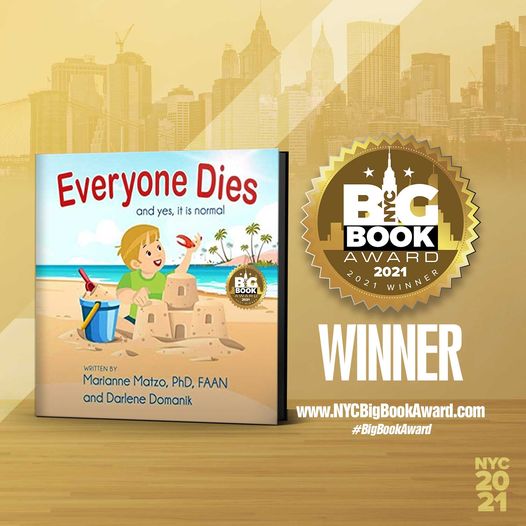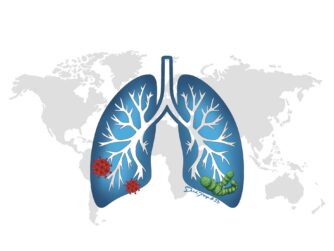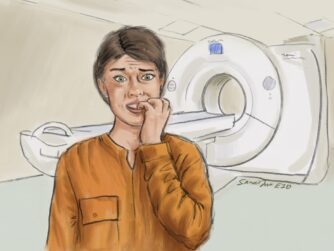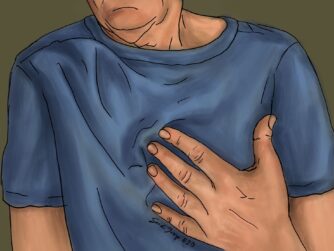Learn how your treatment plan is decided and terms you may see
We continue our series to help you understand cancer and its treatment. This week we focus on surgery, the oldest form of cancer treatment. Learn about surgery timing, types of cancer surgery, and how NCCN evidence-based guidelines provide a standard treatment path no matter where you are.
In this Episode:
- 02:58 – Wisconsin-Cheese, UFOs, and Booyah Stew
- 04:52 – Anna Quindlen: Get a Life Where You Are Generous”
- 08:06 – Medical Specialists Involved in Cancer Care
- 08:52 – Treatment Decisions, Tumor Board and NCCN Guidelines
- 12:03 – Adjuvant and Neoadjuvant Therapy
- 13:13 – Surgery Timing, Reasons and Types
- 18:00 – Discussion – NCCN and Role of Research
- 21:34 – Reeves Keyworth:“On Loved Ones Telling the Dying to ‘Let Go”
- 23:54 – Outro
Surgery, radiation therapy, and chemotherapy alone or in combination are the most-common methods used to treat cancer. This week we are talking about surgery. “Cutting out” the cancer is the oldest form of cancer treatment. Surgery alone may not result in a cure and often chemotherapy and/or radiation are needed after surgery. Learn all about surgery and the guidelines your doctor will be following for your treatment.
Specific treatment varies, depending on the kind of cancer, the extent of the disease, its rate of progression, the condition of the patient, and the response to therapy
Treatment Decisions and NCCN Guidelines
With all the types and stages of cancer, how does your oncologist decide what treatments should be considered? That’s a good question to ask your clinician, but your case will be presented to several specialists, called a tumor board, where they discuss the options and develop a plan of care.
Most treatment plans will follow National Comprehensive Cancer Network (NCCN®) Clinical Practice Guidelines. You may hear the term “standard of care,” which is referring to guidelines NCCN develops in partnership with major cancer centers across the USA that conduct clinical trials to test potential new treatments. When a treatment is successful, it then becomes the new standard of care. What is comforting is because of these guidelines, you can get the same level of treatment at a rural hospital as you do at a regional cancer institution.

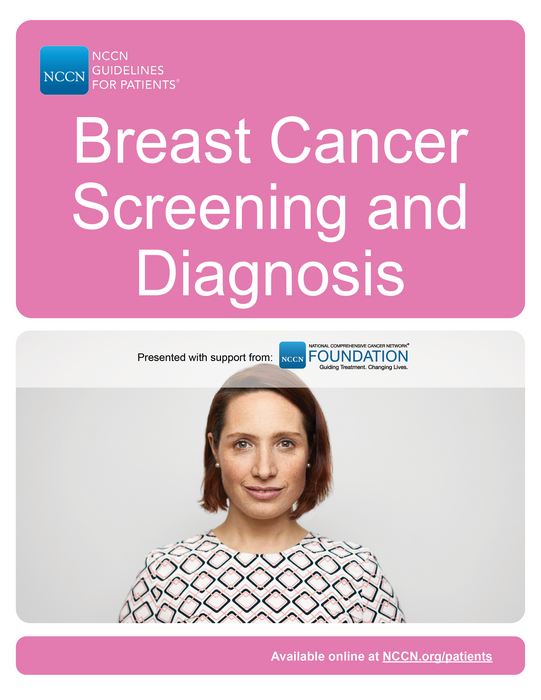
Many patients may want the whole “roadmap” of their treatment as early as possible. Know that often there are more tests and decisions before that can be determined. But once you’re ready to start treatment, don’t be afraid to ask about the big picture. This can save the frustration of being told there is another phase of treatment after you thought you were done. Having these guidelines can help you know what to expect and questions to ask.
Cancer Surgery – Why It’s Done and Why It may Be After Other Therapies
We talk about surgery and why with the many different paths, a therapy such as chemotherapy or radiation may come before surgery. Words you may also hear are adjuvant or neoadjuvant therapy.
Adjuvant (means helper) therapy is a treatment that increases the effectiveness of a medical intervention. In cancer, chemotherapy given after surgery is called adjuvant therapy. This sequence of surgery first and chemotherapy is a common scenario.
Neoadjuvant therapy is when therapy is given first and then surgery is performed. In this case the therapy (like radiation or chemotherapy) is given to shrink the tumor because less extensive surgery is needed for a smaller tumor.
Learn also about the types of surgery as Marianne explains details of surgical options.
Related Content:
See the other podcasts in our series about cancer. You can also revisit the podcast and infographic about clinical trials.
- S5E52: Cancer Gone Wild – Learn All About Metastasis
- S5E45: Why Does Cancer Exist? Empower Yourself With Understanding
- S5E46: “Why Do I Have Cancer?” Kismet, Chastisement or Coincidence?
- S5E47: MythBusters – Cancer Edition; Clarifying Common Cancer Myths & Misconceptions
- S5E48: How to Read a CT Scan Report – Learn the Sections Relevant to Your Diagnosis
- S5E49: Are there Miracle Cures for Cancer? With Dr. Jeanna Ford
- S5E50: What is Meant by Cancer Staging? Learn the Language of a Cancer Diagnosis
- S4E46: What You Need to Know about Stomach Cancer – Part 1
- S4E47: What You Need To Know About Stomach Cancer, Part 2
- S1E31: Clinical Trials
References:
- On Loved Ones Telling the Dying to ‘Let Go’ by Reeves Keyworth – Rattle: Poetry
- The 8 most convincing UFO sightings in Wisconsin history
- 220 Weird Facts About Wisconsin You Didn’t Know
- Cancer – Treatment, Chemotherapy, Radiation | Britannica
Resources:
- NCCN Guidelines: About
- Neoadjuvant Therapy | Oncology | JAMA Oncology | JAMA Network
- Cryosurgery to Treat Cancer – NCI
- Lasers to Treat Cancer – NCI
- Hyperthermia to Treat Cancer – NCI
- Photodynamic Therapy to Treat Cancer – NCI
- Anna Quindlen. 2000. A Short Guide to a Happy Life”, Available here: https://a.co/d/83et18B
Recipe of the Week
This week we travel to Wisconsin, where Booyah soup is a favored specialty. Part split pea, part beef stew, you’re sure to enjoy it on chilly days. Get this Green Bay Booyah! recipe from The Home in Homestead.


https://blog.feedspot.com/palliative_care_podcasts/
Everyone Dies: and yes, it is normal!
Everyone Dies (and yes, it is normal) is a story about a young boy named Jax who finds something special on the beach where he and his grandpa Pops are enjoying a wonderful day. Pops helps Jax understand that death is a normal part of life. This book provides an age appropriate, non-scary, comfortable way to introduce the important topic of mortality to a preschool child. Its simple explanation will last a lifetime. Autographed copies for sale at: www.everyonediesthebook.com. Also available at Amazon
Mourning Jewelry

We offer a way to memorialize your loved one or treasured pet with a piece of handmade jewelry. When people comment on it and the wearer can say for example “I received this when my mother died” which opens the conversation about this loss. All our jewelry is made with semi-precious stones and beads, vintage beads, and pearls. You can choose between earrings or bracelets and the color family. Learn More




